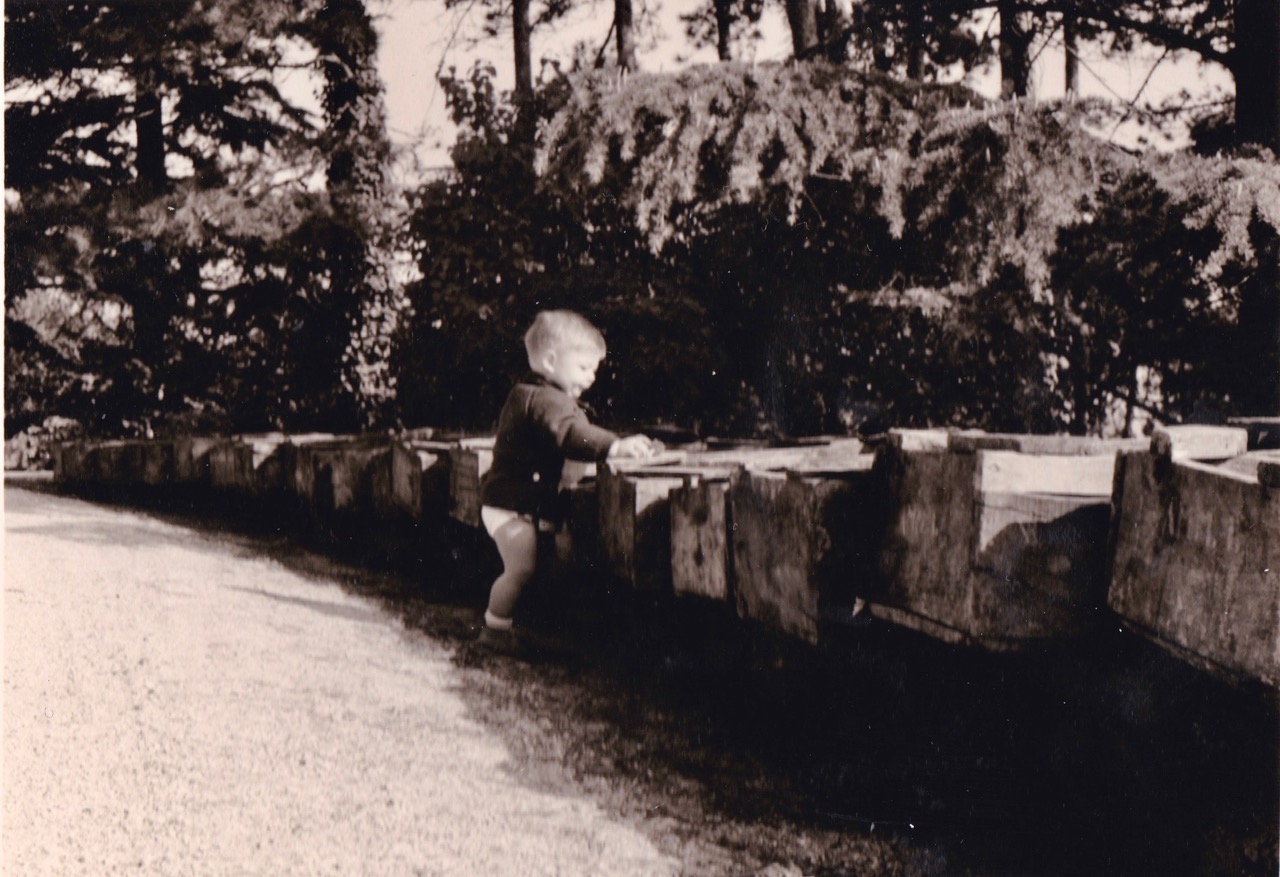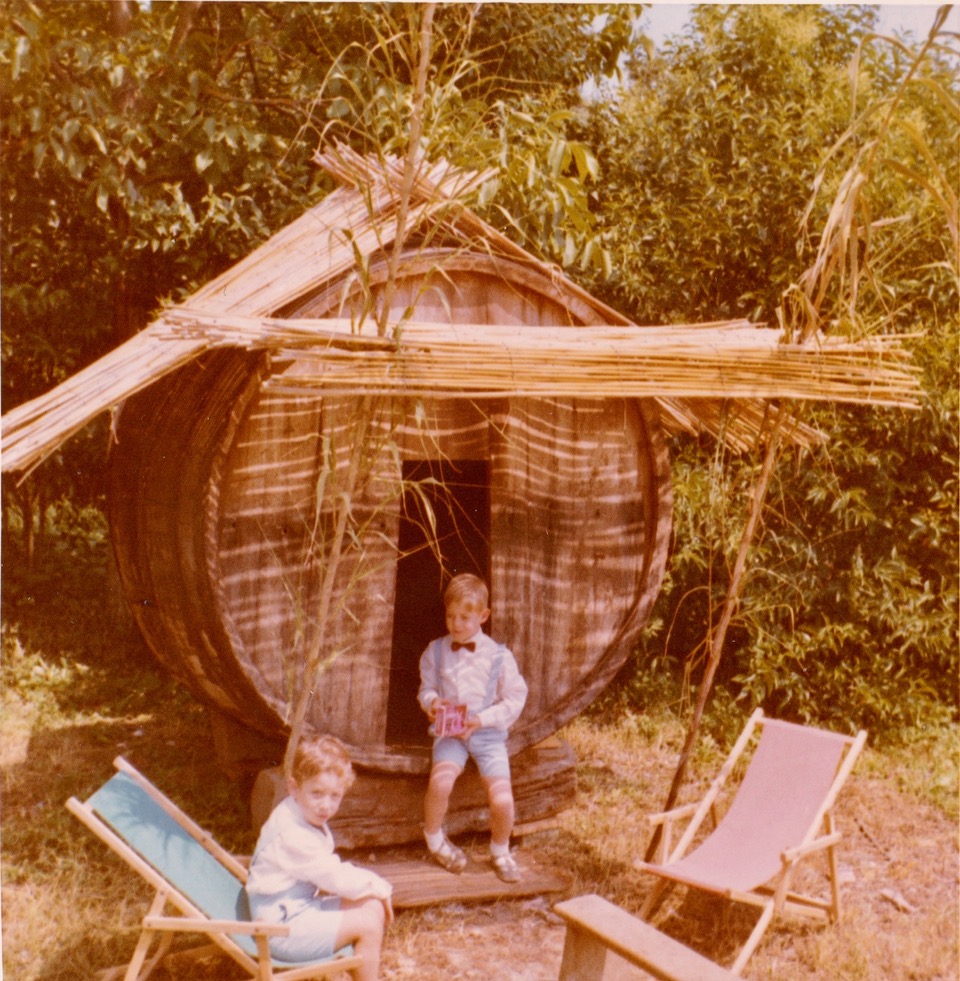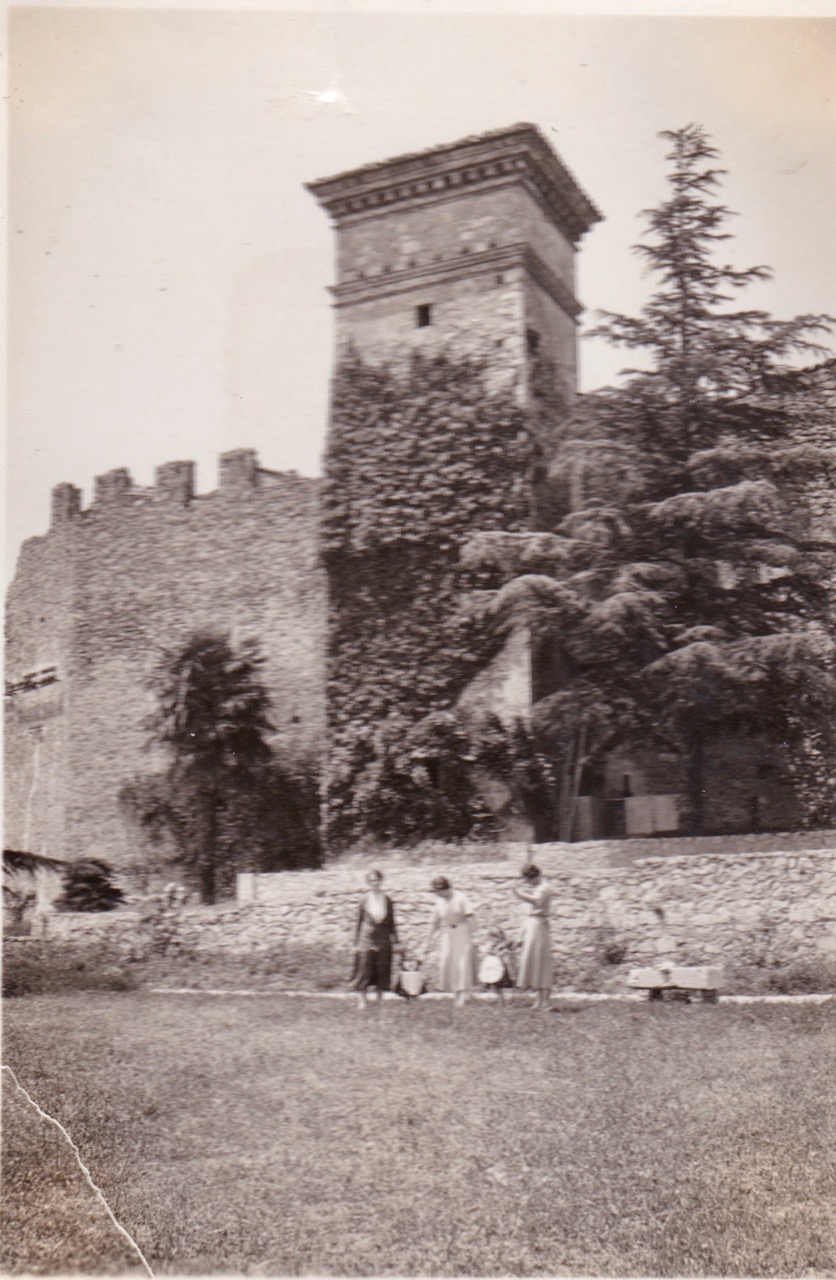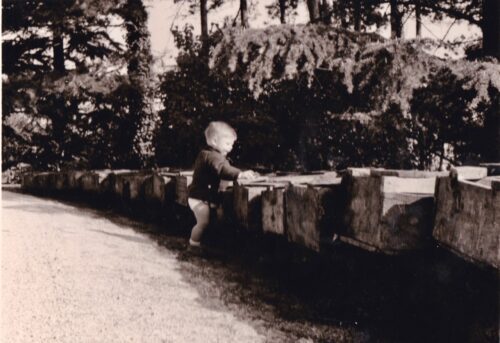
By Francesco Bianchini
My most exciting childhood game, played with brothers, cousins, and friends, was improvising houses, constructing them with whatever came to hand: cardboard packaging from household appliances into which we cut doors and windows; the insides of certain closets; beds with blankets stretched between the head and footboards, then pegged with clothespins; fashioning platforms in the branches of the trees, and using empty detergent buckets as freight elevators.

Collevalenza from the air, with our house stretching across the bottom.
We were like rats nesting in the most unlikely places. The shelters we created were always far from the hustle and bustle of family life, often inaccessible to grownups due to narrow entrances, the need to burrow through tunnels, or scale heights on jury-rigged, retractable ladders. Mom and dad, our great aunts – and especially the ever-prying Rodolfo – threatened from below, uncovered or unwrapped our defenses, even shook our fragile structures from without – but we just laughed, safe, and surrounded by the comforts with which we’d equipped our den: old blankets, pillows and carpets, magazines and comic books, pocket flashlights, and lots of snacks.
In mid-October, after the harvest, a tractor unloaded on the courtyard behind the house dozens of empty wooden boxes used to transport grapes from our vineyard to the cellar. The crates – rectangular and heavy, darkened by must – were left to dry in the hot sun of those autumn afternoons. We children anxiously awaited this moment and took possession, stacking them upright and sideways to build castles with winding corridors and lookout towers. We crushed our fingers, banged our heads, got stung by wasps darting around grapes smashed in the cracks in the wood – and got our knees and clothes dyed purple, but who cared!

Happy little me, with the cherished grape boxes.
In what seemed interminable hours at school, I had, but one thought: go home and exult in the crazy fun of the grape-box forts, yet inevitably we’d return one day to find the yard empty, our castles dismantled, and the crates neatly stored in the shed. That was a brick building covered in a mantle of climbing vines that, in the approach of winter, was colored by bright red leaves. Entering the shed was officially forbidden – but we went in with all the more gusto because of the wonders it housed. There was an old wooden threshing machine, then disused, that beckoned us to climb inside like Jonah’s whale. Also ancient farm tools and old carriages, including a landau that had belonged to my great-grandmother. During the war, it was said, the family had hidden a Fiat Balilla under the woodpile there, the logs continually renewed so the Nazis – who had quartered themselves in the house – would not notice.

The shed in our garden, circa 1930.
One year my father surprised us by hauling to a corner of the garden one of those enormous wooden wine barrels that have now been replaced by stainless steel. He secured it in place on wooden wedges, and our carpenter cut a door and two small windows on either side, and fit two benches in the curvature of the interior. He also devised a table that, when raised and latched to the wall, allowed us to come and go, but when lowered became our dinette, just like an RV. The top of the barrel was covered with a straw mat that also unrolled to provide shade over the door, and mamma sewed cushions and curtains. We loved the place but once the thrill of the novelty had passed, our habit of nomadism prevailed. By the following year, the little barrel house was abandoned and derelict, its thatched roof lopsided, the door askew, appearing like a Bantu hut pillaged by a neighboring tribe.

My father’s wine-barrel cottage, with my brothers Filippo and Fabrizio.
For a long time my brothers and I cultivated the single fixation of finding access to the tower – the tallest, the most beautiful, the most elusive of the house. We studied floor plans, knocked on walls to discover secret passages, tried all the keys, used ladders to peer through the bars of dark windows. After many attempts we finally managed to find an unused aperture that, once we broke the lock, opened in mid-air – somewhere in time, a communicating staircase had fallen or been removed. But we were in, and ecstatic, even though upon jumping down, the discovery revealed nothing extraordinary: a row of empty and shabby-looking rooms arranged around a spiral staircase, and – at the top – a room accessed through a trapdoor, containing the castle’s water tanks. Yet we had conquered a new territory, one to be annexed and domesticated, which meant first cleansing it of layers of compacted dust, greasy cobwebs draping the walls and beams, swallow’s nests and pigeon droppings. Afterwards, we secretly transported a few chairs and other knick-knacks and broken things found in a nearby attic; we built shelves and tables out of fruit crates, and from a dizzyingly high window raised and lowered baskets to supply candles, comics, and treats filched from the kitchen.

The Forbidden Tower, circa 1930.
As a child I thought putting food on the table was an alchemy that only grownups could perform. Mixing the ingredients, kneading, baking, and cooking were techniques that certainly could not be improvised. At best we could sneak a box of marrons glacés or chocolates, some torchietti (a kind of Italian cheese bagel), maybe a couple of dried sausages. Sequestered in the height of the tower, however, where there was little chance of being discovered, we went further and tried preparing our own snacks, copying something Rodolfo made, hiding the concoction from my mother who hated even the idea: slices of plain bread soaked in water and sweetened with spoons of sugar. Not complicated at all, with bread sneaked from the kitchen, bottled water, and a bowl of sugar that immediately attracted a procession of ants. Another alternative was bruschetta, but unfortunately there was no way to make toast without a fire. So we passed each slice over a candle flame, dousing it with salt and oil we’d pilfered from the pantry. Rapture!







